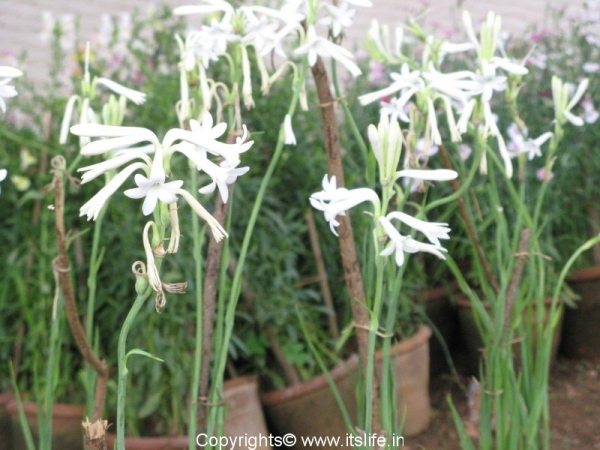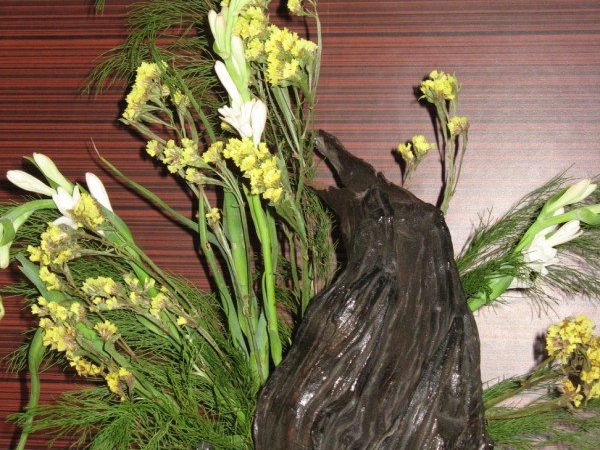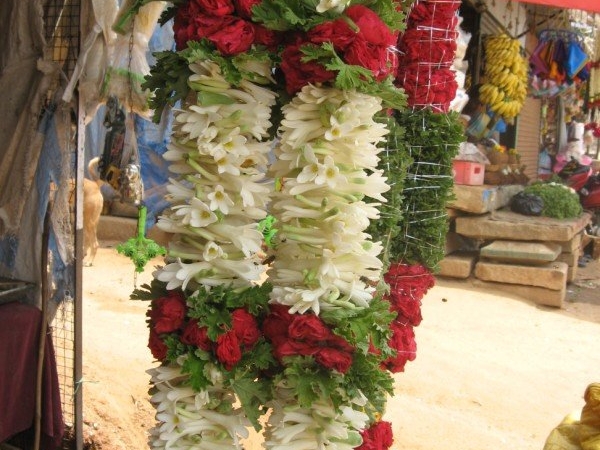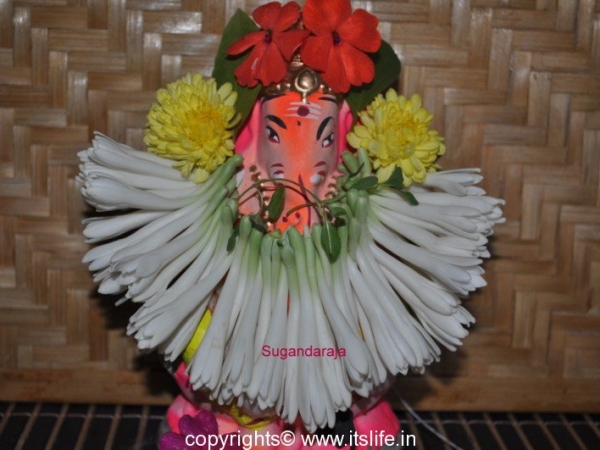Plant Summary:
Polianthes tuberose is the botanical name of Rajanigandha and the other common names are Mexican tuberose, Sugandaraja (Kannada), Nelasampengi (Telugu), Nila Sampangi (Tamil), Gulcheri (Marathi), Ye Lai Xiang (Mandarin). All the names almost mean “fragrance of the night” or “king of fragrance”. Rajanigandha belongs to Agavceae family.
Rajanigandha is a perennial plant that can be grown from tubers. The leaves of the plant are long, green and grass like, which are clustered at the base of the plant. The spike of flowers appears from the middle of the plant that can reach up to 18 inches in height. Few smaller leaves are attached to the spike. The flowers bloom in a cluster on top of the spike. The flowers are waxy and have five lobed petals and are tubular. They can be either single layered flowers or double or triple layered flowers.
The scent of these white flowers is strong and pleasant. The oil extracted from these flowers is used in the perfumery industry.
The cut flowers are used in flower arrangements as they last for a long time and the room is filled with its perfume. The double or triple layered flowers last longer in flower arrangement than the single layered flowers. Plant them where they get ample sunshine in soil or in pots. Summer is the time when the plant blooms.
The flowers are very popular in South India to make garlands. These garlands are used in weddings as well as offerings to Gods in temples. In Hawaii these flowers are strung into Lei. “Lei” in Hawaiian means a garland or wreath that is worn over the neck.
Rajanigandha is offered to Lord Ganesha during the 21 Pushpa pooja while chanting the following mantra: “Om Sharvathanayaaya Namaha Sugandharaja Pushpam Samarpayami “.








GOOD WORK